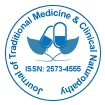Unsere Gruppe organisiert über 3000 globale Konferenzreihen Jährliche Veranstaltungen in den USA, Europa und anderen Ländern. Asien mit Unterstützung von 1000 weiteren wissenschaftlichen Gesellschaften und veröffentlicht über 700 Open Access Zeitschriften, die über 50.000 bedeutende Persönlichkeiten und renommierte Wissenschaftler als Redaktionsmitglieder enthalten.
Open-Access-Zeitschriften gewinnen mehr Leser und Zitierungen
700 Zeitschriften und 15.000.000 Leser Jede Zeitschrift erhält mehr als 25.000 Leser
Indiziert in
- CAS-Quellenindex (CASSI)
- Google Scholar
- Sherpa Romeo
- Öffnen Sie das J-Tor
- Genamics JournalSeek
- RefSeek
- Verzeichnis der Indexierung von Forschungszeitschriften (DRJI)
- Hamdard-Universität
- EBSCO AZ
- Publons
- Genfer Stiftung für medizinische Ausbildung und Forschung
- Euro-Pub
- ICMJE
Nützliche Links
Open-Access-Zeitschriften
Teile diese Seite
Abstrakt
HIV/AIDS Education in Traditional Indian Systems of Medicine: Faculty Perspectives
Jayagowri Sastry, Vineeta Deshmukh, Vijay Dhoiphode, Asmita Wele, Manisha Solanki, Farha Rizwan, Amita Gupta and Anita Shankar
Background and objective: There are over 500 colleges within the Indian System of Medicine and Homeopathy (ISM & H) that includes Ayurveda, Yoga and Naturopathy, Unani, Siddha and Homeopathy (AYUSH). Therapies from AYUSH are widely utilized throughout India for both acute and chronic illnesses and may be an important source of care for HIV-infected individuals. This qualitative study documents faculty perspectives within AYUSH institutions of higher learning to understand how the etiology, diagnosis and treatment of HIV/AIDS taught within their curriculum.
Methods: Thirty-three faculty and student informants from five AYUSH institutions in Pune and one College of
Siddha in Chennai were interviewed from June 2009-August 2010. Topics included etiology, pathogenesis, diagnostics, treatment and management of HIV/AIDS within each system.
Results: Thematic analysis revealed that although generally biomedical textbooks were used to provide the
background training on HIV/AIDS and diagnostics, the pathogenesis and symptomatology allowed the disease entity to fit into established disease concepts within the relevant AYUSH system. Each AYUSH system viewed HIV as an amalgam of conditions and abnormal lifestyles leading to the disease. In general, in AYUSH, there was greater reference to religion and a moral component in disease management and prevention. Faculty from Ayurveda, Unani and Siddha faculty stressed the need for positive health promotion through lifestyle changes in diet and adherence to healthful daily routines. AYUSH faculty believed in referring patients to biomedicine for antiretroviral therapy (ART), although indicated that alternative treatments may be provided in addition to ART.
Conclusions: There is no formal inclusion of AYUSH treatments within the national Indian HIV health policy,
yet AYUSH practitioners exceed that of medical doctors. Greater efforts are needed to identify areas of collaboration between experts in biomedicine and AYUSH medical systems in India.
Zeitschriften nach Themen
- Allgemeine Wissenschaft
- Biochemie
- Chemie
- Genetik und Molekularbiologie
- Geologie und Geowissenschaften
- Immunologie und Mikrobiologie
- Klinische Wissenschaften
- Krankenpflege und Gesundheitsfürsorge
- Landwirtschaft und Aquakultur
- Lebensmittel & Ernährung
- Maschinenbau
- Materialwissenschaften
- Medizinische Wissenschaften
- Pharmazeutische Wissenschaften
- Physik
- Sozial- und Politikwissenschaften
- Umweltwissenschaften
- Veterinärwissenschaften
Klinische und medizinische Fachzeitschriften
- Anästhesiologie
- Augenheilkunde
- Betrieb
- Dermatologie
- Diabetes und Endokrinologie
- Gastroenterologie
- Genetik
- Gesundheitspflege
- Immunologie
- Infektionskrankheiten
- Kardiologie
- Klinische Forschung
- Medizin
- Mikrobiologie
- Molekularbiologie
- Neurologie
- Onkologie
- Pädiatrie
- Pathologie
- Pflege
- Toxikologie
- Zahnheilkunde

 English
English  Spanish
Spanish  Chinese
Chinese  Russian
Russian  French
French  Japanese
Japanese  Portuguese
Portuguese  Hindi
Hindi